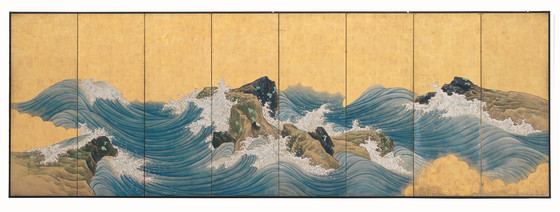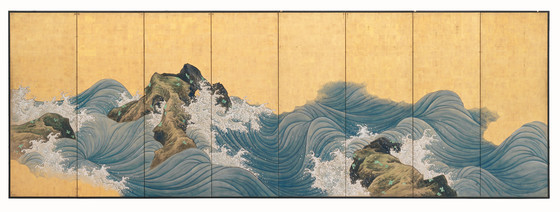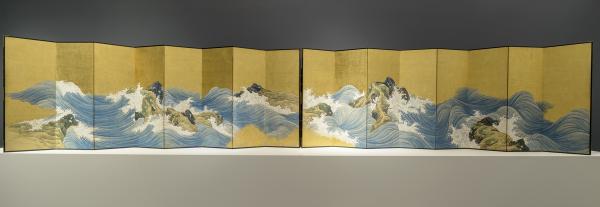These extraordinary screens represent a game-changing discovery in the history of Japanese art of the Edo period (1615–1868), and of the history of the famed Maruyama School of Painting Maruyama Ōkyo (1733–95).
Ōkyo is considered the finest, and most significant, Japanese artist of the last 400 years. The artist of these screens, Kakurei, is officially designated one of the “Ten Great Disciples of Ōkyo,” out of the hundreds of artists who are known to have studied under the great Ōkyo himself. Indeed, Kakurei is the painter of the only known portrait of Ōkyo, demonstrating the supreme position he held among Ōkyo's disciples. But, mysteriously, until the appearance of these stunning screens, very little work by Kakurei has been known to art historians.

Discovered in 2015 in the treasure-house of an ancient Kyoto estate, these screens were found in their original virginal state, untouched since their creation over 200 years ago. They are unique for their huge size, lack of silk brocade borders, and pristine color. The high quality of the gold-leaf, the use of semi-precious stone pigments, and the unusual size of these screens demonstrate that they were a special commission by a wealthy Kyoto art patron of the early 1800s. We know that their size enabled them to be used as a kind of substitute for the actual river: in a large reception room inside a great estate, they would have been arrayed parallel to each other, with the patron hosting his friends on a hot summer day, drinking sake and eating summer delicacies, served by geisha, and flanked on both sides by the cooling images of this pristine river flowing past the patron and his guests.

The tumultuous river with its boulders and swirling vortexes—depicted across all 36 feet of these two screens—is clearly the river Hozugawa, located in the far northwest of Kyoto, in the area known as Arashiyama (Stormy Mountain), one of the legendary scenic sites of Kyoto. A National Treasure pair of screens by Kakurei’s teacher Ōkyo, also of the highly unusual format of eight (rather than the typical six) panels seen in our screens, also depicts the Hozugawa River, but with additional vegetation and flowering plants on both sides of the river.
In this slightly later, post-Ōkyo, radical re-visioning and paring down of the same theme, all non-river elements are eliminated, leaving just the river, its massive rocks, and the enveloping gold-leaf clouds and mist, to magnificent effect. These remarkable screens will be a centerpiece of The Life of Animals in Japanese Art, to be presented in 2019 at LACMA. As one of the most powerful pairs of screen paintings depicting raw nature ever to appear in the history of Japanese art, this astonishing artwork adds immense luster and distinction to the collection of the Pavilion for Japanese Art at LACMA.
During our 31st annual Collectors Committee Weekend (April 21–22), members of LACMA's Collectors Committee generously helped the museum acquire nine works of art spanning a breadth of eras and cultures. Check back on Monday to learn about another acquisition.



